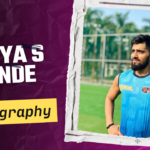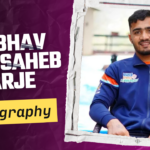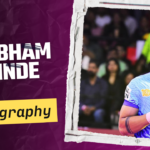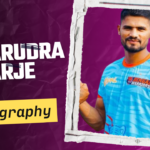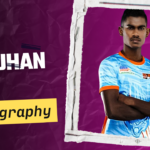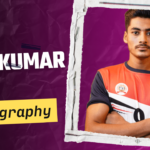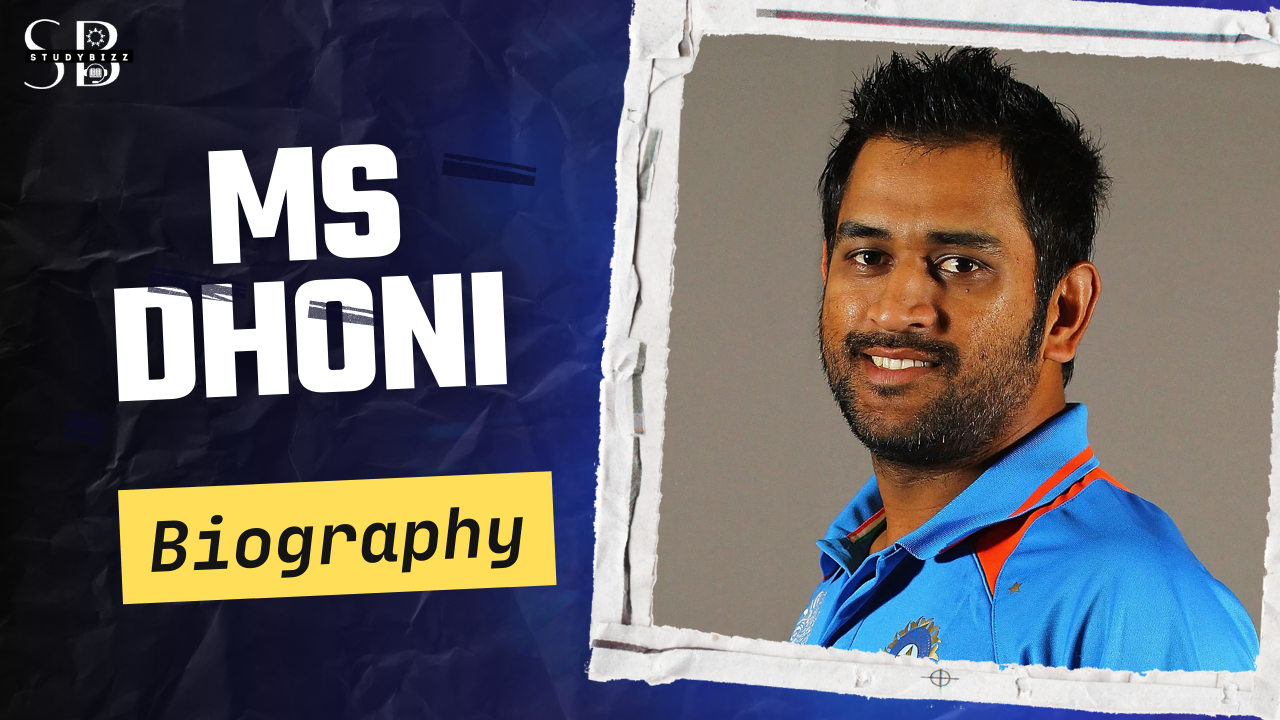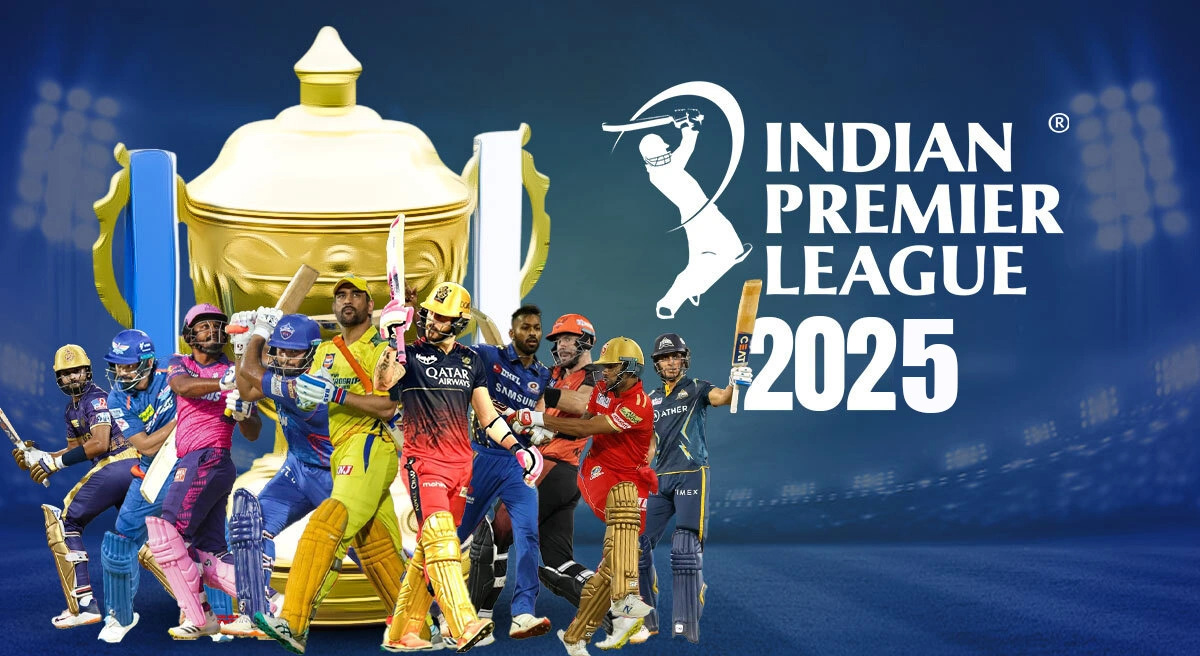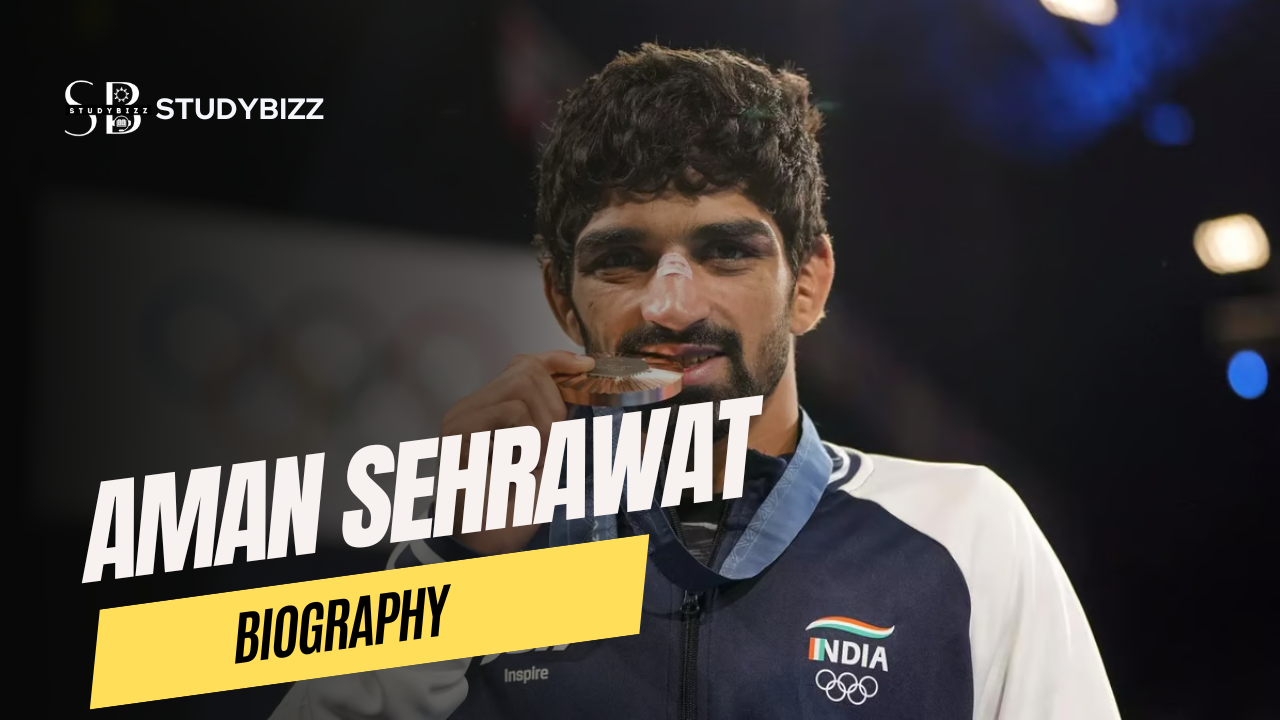MS Dhoni probably ranks as the third-most-popular Indian cricketer ever, behind only Sachin Tendulkar and Virat Kohli. He emerged from a cricketing backwater, the eastern Indian state of Jharkhand, and made it to the top with a home-made batting and wicketkeeping technique, and a style of captaincy that scaled the highs and hit the lows of both conservatism and unorthodoxy.
Under MS Dhoni’s leadership, India won the top prize in all formats: leading the Test rankings for 18 months starting December 2009, winning the 50-over World Cup in 2011, and the T20 world title on his captaincy debut in 2007.
He seemingly emerged fully formed at 23, when he blasted two centuries in a triangular 50-over tournament for India A in Nairobi. Long-haired and fearless, he soon swaggered into international cricket and became an instant darling of the crowds with ODI innings of 148 and 183 not out within a year of his debut.
Dhoni improvised abd learned, but he didn’t apologise for his batting style, which was not the most elegant. He became a multifaceted ODI batter, one who could accumulate, rebuild, and unleash big sixes, all seemingly at will.
Along the way he showed leadership skills, which were recognised when Rahul Dravid gave up the captaincy in 2007. A day before that announcement from Dravid, a young India side under Dhoni played the first game of the first T20 World Cup in South Africa, and went on to win the tournament. The ODI captaincy was a natural progression, and the Test role duly followed too.
Dhoni brought to the captaincy a thick skin and the relative indifference to results that an Indian captain needs to keep the job for long. Along with India’s coach, Gary Kirsten, he put his senior performers in a comfortable place, and they repaid him by producing some of their best years in international cricket. Dhoni’s sense of calm on the field mostly worked like a charm in the shorter formats, although he sometimes sat back for too long in Tests tactically. Still, India had some of their best years in Test cricket, in terms of tangible achievement, under him: in the 60 Tests he led in, they had a win-loss ratio of 1.5.
However, after the 50-over World Cup win in 2011, which Dhoni sealed with a timely 91 and a six off his patented helicopter shot, an ageing team lost eight straight Tests on the trot away from home and his captaincy came under immense pressure, which was then exacerbated by India’s first home series loss in eight years, 2-1 to England in 2012-13. This brought about a new chapter in Dhoni’s career, where he seemed more assertive as a captain, building a new team. He played his best Test innings on a turner to win India the Chennai Test in 2013 against Australia and became the first captain to lead India to four wins in a Test series.
Away from home in the winter of 2013-14, India lost Test series in South Africa and New Zealand by 1-0 margins that did not reflect how close they came to winning both. The England tour of 2014 began promisingly, with a drawn first Test followed by a historic win at Lord’s, but India crashed to earth immediately afterwards to lose the series 3-1. At Old Trafford and The Oval, with the batting crumbling around him, Dhoni played a couple of his bravest innings in Tests.
On the tour of Australia that followed, India competed ferociously, thanks to a young batting core led by Kohli, but it didn’t quite show in their results. Dhoni announced after the third Test, in Melbourne, that he was retiring from the format. He ended his career in whites with a proud record for a wicketkeeper: 4876 runs at an average of just over 38, six hundreds, and just under 300 dismissals.
Dhoni continued to lead India in the shorter formats, and they got to the semi-finals of the 2015 World Cup. A year later they won the Asia Cup T20 in Bangladesh but exited the home T20 World Cup in the semi-final, though Dhoni enjoyed a good tournament as a finisher, scoring 89 runs while only being dismissed once in five innings, and showing electric reflexes while keeping to the spinners. He eventually played on till the 2019 World Cup (but gave up the white-ball captaincy in January 2017).
India’s defeat to New Zealand in the semi-final of the 2019 World Cup turned out to be Dhoni’s final international, although that wasn’t officially confirmed till more than a year later when after Covid brought sport to a halt, he announced it on Instagram just as players’ preparations for that year’s delayed IPL began.
In that tournament, Dhoni has been the face of the Chennai Super Kings franchise, inspiring fierce cult fandom. When Super Kings were reinstated in 2018 after two seasons out serving a suspension, he was back at the helm, leading the team to a fairy-tale third title, and he almost repeated the feat in 2019, when CSK lost a thrilling final against Mumbai Indians by just one run. Dhoni led them to their third title win in 2021, and repeated the feat in 2023, making CSK the league’s most successful franchise, alongside Mumbai.

MS Dhoni Biography
| Full name | Mahendra Singh Dhoni |
| Nick Name | Mahi MSD, MS, Captain Cool |
| Date of Birth/DOB/ age | Jul 07, 1981 (42 years) |
| Birth Place | Ranchi, Bihar (now Jharkhand) |
| Zodiac sign/Sun sign | Cancer |
| Profession | Cricketer (Wicket-keeper) |
| Country | India |
| Cricket Role | Wicketkeeper Batter |
| Father name | Pan Singh (MECON employee; worked at Junior Management position) |
| Mother name | Devki Devi |
| Married | Married |
| Spouse or Girlfriend | Priyanka Jha (died in 2002) Lakshmi Rai (South Indian actress) Sakshi Singh Rawat (Sakshi Dhoni) (4 July 2010) |
| Children | Daughter– Ziva |
| Education Qualification | Right-hand bat |
| Religion | Hinduism |
| Current Residence | Harmu Housing Colony, Ranchi, Jharkhand, India |
| Nationality | Indian |
| Batting Style | Right hand Bat |
| Bowling Style | Right arm Medium |
| FIELDING POSITION | Wicketkeeper |
| International Debut | ODI- 23 December 2004 against Bangladesh at Chittagong Test- 2 December 2005 against Sri Lanka at Chennai T20 – 1 December 2006 against South Africa at Johannesburg |
| Last Match | ODI– 9 July 2019 against New Zealand at Emirates Old Trafford Test– 26 December 2014 against Australia at Melbourne Cricket Ground T20– 27 February 2019 against South Africa at The Wanderers Stadium |
| International Retirement | 15 August 2020 |
| Teams | India, Asia XI, Chennai Super Kings, Indians, Jharkhand, Rising Pune Supergiant, India A |

MS Dhoni Physical Statistics
| Height | in centimeters– 175 cm in meters– 1.75 m in feet inches– 5’ 9” |
| Weight | in kilograms– 75 kg in pounds– 165 lbs |
| Eye Color | Dark Brown |
| Hair Color | Black |
MS Dhoni Profile
Less than thirty years before that enchanting Saturday night when Ravi Shastri’s voice rang through television sets all over India when even the spunky and exuberant Indian youth showed more interest in an old-school CRT television at a local chai ki dukaan than the dance-floor at a pub, a pump-operator in Ranchi awaited the birth of his third child.
Any cricket fan worth his salt just read this in Ravi Shastri’s most dramatic voice, as Mahendra Singh Dhoni enchanted the Wankhede on the night of 2nd April 2011.
The Foundations
Hailing from Jharkhand, Mahendra Singh Dhoni’s rise through the ranks into international cricket is a tale of rebellion, extraordinary merit, perseverance, and, most of all, belief. After being scouted on the whims of his school P.E. teacher as a wicketkeeper, Dhoni created whispers in the cricketing circles of Ranchi – a teenage boy with no measurable upper-body strength clearing boundaries against some of the best fast bowlers of the district. However, the system failed him as he found it difficult to cut candidates from the more affluent A-tier states. Consequently, in a desperate move, he joined the Railways Ranji team and started to work as a ticket collector at the Kharagpur railway station to make ends meet.
Nevertheless, in a few months, the stars started to align themselves with the precocious wunderkind from Ranchi. Inspired by the KSCA, the BCCI started a country-wide Training Research Development Wing to scout talent from the more financially backward states. Dhoni immediately caught the eyes of the scouts and was sent on an A tour to Kenya, where his talent burst forth for the world to see as he showcased his batting pyrotechnics against world-class bowlers in alien conditions. He immediately shot to national reckoning and was selected for the tour of Bangladesh in November 2004.
By then a broad 22-year-old with long locks, Dhoni’s India career got off to an inauspicious start, as he scored a duck in his first ODI and a string of low scores followed. However, the selectors and the then-captain Sourav Ganguly decided to persist with him and gave him an extended run. Dhoni repaid their faith with an exhibition of his charisma and audacious stroke play in his fifth ODI against Pakistan, who certainly didn’t see the butchery coming, as he butchered his way to 148 at Vishakhapatnam. Later in 2005, he went one step further bludgeoning his way to a brutal 183* in Jaipur to make a mockery of a 300-run chase against a Sri Lankan attack that looked aghast at his bizarre but effective stroke play and the unparalleled physical power that he imparted on the ball.
As teams all over the world tried to work a way around his fireworks, Dhoni established himself as a reliable batsman in Tests too, with a technique that worked against pace, seam, swing and spin. In his 5th Test, he coincidentally scored another 148 against Pakistan in an uncharacteristically stoic effort to save the match, thereby portraying his versatility as a batsman. After a string of wicketkeeper-batsmen being tried in the side, Dhoni had finally become a mainstay in the side – a powerful pinch-hitter towards the end of the innings capable of more than just cameos, and a more-than-reliable wicketkeeper in the side.
In a state where leather ball cricket was a luxury, Dhoni grew up playing tennis ball cricket tournaments. With heavy Kashmir willow bats, light and hollow tennis balls, and long boundaries, he developed a bottom hand-dominated technique to impart maximum power on the light tennis ball which undergoes energy-damping upon impact. However, Dhoni stood out when he, along with a friend, developed an elevated body-weight shot with an exaggerated follow-through that cleared boundaries with ease. On that count, cricketing folklore will remember MS Dhoni as the man who dared to play the ‘helicopter shot’ against the leather ball.
Captaincy
With a mature head on his shoulders and an astute and shrewd cricketing mind, Dhoni was recommended by senior players like Sachin Tendulkar and Rahul Dravid for captaincy after Rahul Dravid stepped down as skipper.
On his first assignment in the inaugural World T20 in 2007, Dhoni and his young troops romped to the title in a shock victory for the inexperienced Indian side, bringing about the T20 revolution in India. Dhoni’s calm and composed leadership was widely lauded in the cricketing fraternity after India brought the trophy home, earning him the label of ‘Captain Cool’. He was soon handed the ODI leadership as a natural move after his World T20 triumph, and after the retirement of Anil Kumble in late 2008, the Test leadership was thrust upon him too.
Dhoni had a golden run as captain, with an unbeaten run in the Test series since his captaincy debut, leading them to their first stint as the top-ranked Test team in the world. His winning streak included the home series against Australia in 2008, a 1-0 triumph in New Zealand in 2009, and a 2-0 victory against Sri Lanka at home, culminating in a comprehensive win at the Brabourne stadium, Mumbai, where he received the coveted Test Championship mace. India continued to dominate in home Tests after this and drew a series in South Africa, coming very close to their maiden series win in South Africa in the decider in Cape Town, where some stoic resistance by the hosts narrowly saved them from the defeat at the hands of a rampaging Indian side in top form.
Dhoni continued to garner praise for his success across formats; especially for his clinical success in limited-overs cricket, reaching the pinnacle of his captaincy career during India’s path to glory in the 2011 World Cup. Dhoni’s India knocked out Australia, the holders of the World Cup since 1999, in the quarter-final in Ahmedabad. Having gone through a patch of lacklustre form throughout the tournament, Dhoni peaked at the right time, exhibiting his usual sangfroid on the way to 91* in the World Cup final against Sri Lanka, and lofted an iconic six over long-on, triggering night-long celebrations all over Mumbai and the rest of India.
Transition Period – A rebuilding phase
After the World Cup, the Indian team saw a difficult transition period. Dhoni’s shrewd captaincy came under severe scrutiny during the 8 successive losses in England and Australia. In the aftermath of the overseas failures, which included England toppling them over as the number 1 Test side in the world, a fatigued Indian side faced a 1-2 drubbing against England at home as India’s Test team hit rock bottom. The team’s abysmal performances in the longer format raised serious questions about Dhoni’s leadership and a whisper of his sacking; a somewhat misplaced and impulsive proposition, given the poor overall performance of the entire team, their inept technique against spin (which is their forte), an overflowing timetable, and a plethora of viable explanations.
However, the transition phase in Indian cricket saw the famed batting line-up failing to meet their lofty standards, and a rather raw bowling fast-bowling line-up with negligible experience struggling, as Zaheer Khan suffering from a long-term injury.
There was only so much Dhoni could do…
However, after taking some tough selection calls, Dhoni led the way in the Border-Gavaskar Trophy with a marathon 224 in Chennai, setting the platform for a clean sweep of Australia at home, clinically blanking them to regain the trophy. India became the first team in more than 40 years to whitewash Australia in a Test series and Dhoni now had the most Test wins for an Indian captain under his belt.
India’s poor Test form had unfortunately seeped into the ODI fold as well. However, Dhoni developed an uncanny ability to play a symbolic game of poker during run-chases and backed himself to finish it off in the last over without blinking. He repeated this feat multiple times: whacking a 112-meter six to clear the Adelaide boundary with 12 to win off 4 in the CB series, chasing down 15 in the last over in the Celkon Cup final to name a few, and a ridiculous 23 off the last over in a run-chase off Axar Patel to win a dead-rubber in IPL 2016; with the equation at 12 to win from 2, he dropped jaws by clouting two sixes to pull off a scarcely believable victory.
He had started to build a reputation of being one of the most reliable batsmen in limited-overs cricket, taking India to victory constantly from the jaws of defeat. For instance, his century batting at No.7 against Pakistan at Chennai, a stunning 113 walking into the crease when India was 29 for 5, was a knock that symbolized the leader MS Dhoni who led by example, as well as exhibited sharp tactical nous: a much sought-after combination in a captain.
The Redemption
After rebuilding the ODI side and phasing out the seniors, Dhoni had a fine run as captain in 2013, leading India to their second Champions Trophy triumph as they cruised to the title undefeated, providing a welcome distraction from the IPL spot-fixing controversy. This made him the first captain in history to win all three ICC global trophies, etching his name in the history books with an unprecedented record and an enviable trophy cabinet as a limited-overs captain.
He led the side to the final of the 2014 World T20 in Bangladesh, in which India lost to Sri Lanka in the final, and the semi-final of the World T20 in 2016 in India. Dhoni also is the captain of the Chennai franchise, one of the most successful teams in the history of the Indian Premier League, which won back-to-back titles in the years 2010 and 2011 and also the Champions League T20 in the years 2010 and 2014.
Dhoni’s Test captaincy came under severe criticism, especially after India’s continuous losses overseas. Despite a Lord’s victory on a green top in 2014, India went on to lose the three subsequent Tests in England in 2014, where Dhoni made some lone contributions, including a dogged 82 in a total of 148 and a few other fifties. He countered the seam movement and swing by playing late and walking down the pitch, showing greater application than the rest of his line-up with more orthodox techniques. Despite not having the often-talked-about hundred in overseas conditions, Dhoni has made several valuable contributions in the lower order which have immeasurable value in the context of the game.
The beginning of the end
In the away Border-Gavaskar trophy in 2014, moments after helping India draw the Boxing Day Test at Melbourne, Dhoni announced that he was stepping down from Test captaincy and retiring from Test cricket, citing excessive workload as the reason for quitting the longest format. After honing a potent bowling attack and a gritty batting line-up for his heir, and taking several body blows – literal and metaphorical – Dhoni ensured that he copped the criticism to nurture a potent team and left his successor a young, zealous team with the tenacity, fitness, and most importantly, the positive attitude to perform in all conditions.
Dhoni successfully led India to the 2015 World Cup semi-final, where the defending champions conceded cricket’s most desirable trophy to Australia. Here too, Dhoni was the lone warrior, as he gritted his way through to 65, as his team fell short by 95 runs.
On 4th January 2017 Dhoni stepped down as the captain of the Indian ODI and T20I team, bringing about the end of an era in Indian cricket. Having led the team with zeal and panache across all formats of the game for more than nine years, Dhoni decided to play with the freedom of a pure batsman in his final lap of international cricket without the enormous burden of captaincy.
In 2018, with the top order of the Indian team in turbo-mode, MS Dhoni had fewer opportunities to bat and went through an alarming dip in form – the likes of which hadn’t been seen since the early days of his international career. With a revised technique and a far more top-handed batting style, Dhoni reinforced his game to suit his waning reactions and wrist strength and continued to be a part of the Indian middle order, guiding younger bowlers, almost handholding the spinners in limited-overs cricket and creating dismissals out of thin air with his lightning-quick stumpings, and almost reinventing the art of wicketkeeping to spinners by eliminating the followthrough at the point of connection.
While his chicanery behind the stumps, and the tactical nous to assist the newer leaders may have been priceless for the team, the lack of runs and the declining strike rate were starting to stand out, leading to his exclusion from T20Is in late 2018. Despite a fantastic IPL 2018, Dhoni has struggled to make his bat do the talking in international cricket of late, as the helicopter stands rusting on the spot it was last seen. After the semifinal heartbreak of the 2019 World Cup, Dhoni did not play an international game for India. On August 15, 2020, just like catches batsmen unaware with his glovework, MS Dhoni surprised the cricketing world by announcing his international retirement through an Instagram post that read, \”Thanks a lot for ur love and support throughout. from 1929 hrs consider me as Retired.\”
The journey started with a run-out and ended with a run-out.
IPL through the years
MS Dhoni and Chennai Super Kings is a great yellow story. Ever since the Indian Premier League idea spread vigorously among the cricketing fraternity, people wondered which team would pouch the then-Indian captain. The Super Kings, run by an organisation that knew the nuances of running sports, knew they wanted a strong leader to lay a strong base and they made a grand opening by bagging Dhoni for a whopping 6 Crore, the highest bid back then. The IPL would be born on April 18, 2008 and on June 1, Dhoni was there leading CSK in the final, albeit in a losing cause in a final-ball finish.
The result may not have gone his way, but he made a mark with his captaincy and by finishing as the side’s second highest run-getter. CSK were stopped one step before the final in 2009, but a year later, Dhoni made a quirky move against Kieron Pollard in the final against Mumbai Indians by placing a straightish mid-off despite having a long-off to get his hands on the coveted trophy after two failed attempts. With three consistent years, Dhoni ensured the team made a big mark and they were considered the invincibles of the IPL. CSK justified the tag by winning the title in 2011 and came runners up in the following two editions.
Dhoni was the third highest run-getter in 2013, a season where he fought a lone battle against Mumbai in the final. His team team suffered a tough loss in Qualifier 2 against a rampant Kings XI Punjab in 2014, another year where Dhoni scored in excess of 350 runs. 2015 was a black mark in CSK’s history as the team was hit by the spot-fixing saga, but Dhoni led the side to the final among the ruckus, before the franchise was slapped with a two-year ban.
The ban meant all the CSK players were to spread and Dhoni moved to the newly formed Rising Pune Supergiant in 2016. He spent a quite year, but was back doing what he does best, leading his side to the final, but yet again, finished runners-up in a heart-breaking loss to the Mumbai Indians in the final.
2018 was a grand re-entry for Dhoni and CSK. The franchise was given an unimaginably rousing welcome by the fans, who even took a train all the way from Chennai to Pune to support the team as the matches had to be moved out of Chennai. Dhoni was back to where he belonged. He looked fresher, fitter and hungrier. With his brilliant power-hitting through the season, he silenced critics who ever questioning his hitting prowess and made a strong statement that he is still well and truly alive for the 2019 World Cup.
After a heart-breaking 1-run loss in the 2019 IPL final to Mumbai, Dhoni led CSK to their 4th title in 2021. Dhoni stepped down from CSK captaincy but he got it back from Ravindra Jadeja after a disastrous 2022 season which saw them not qualify for the playoffs. Dhoni will be back for the 2023 season and will captain the side.
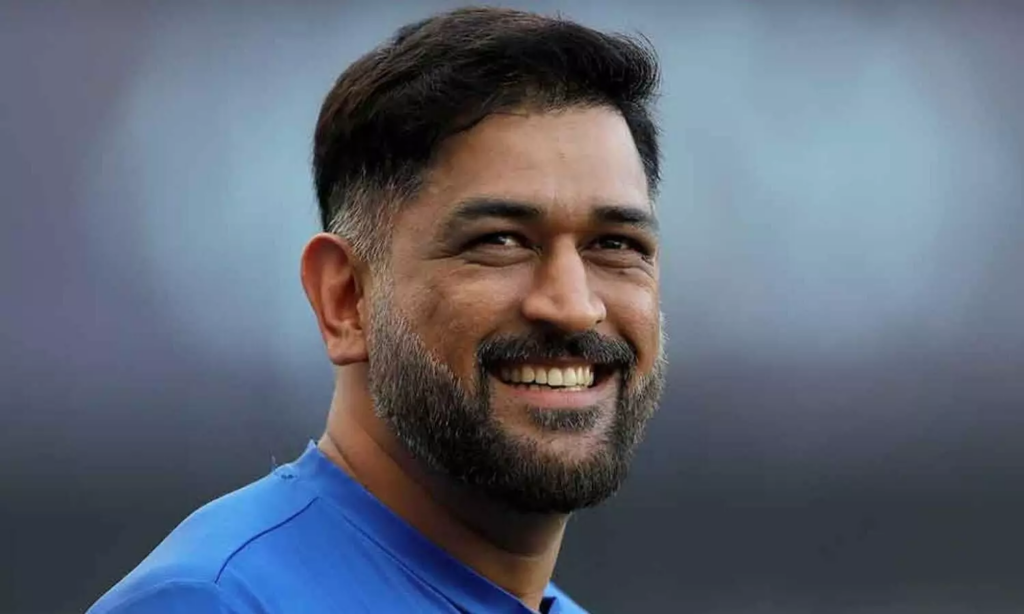
MS Dhoni Stats
Batting Career Summary
| M | Inn | NO | Runs | HS | Avg | BF | SR | 100 | 200 | 50 | 4s | 6s | |
|---|---|---|---|---|---|---|---|---|---|---|---|---|---|
| Test | 90 | 144 | 16 | 4876 | 224 | 38.09 | 8248 | 59.12 | 6 | 1 | 33 | 544 | 78 |
| ODI | 350 | 297 | 84 | 10773 | 183 | 50.58 | 12303 | 87.56 | 10 | 0 | 73 | 826 | 229 |
| T20I | 98 | 85 | 42 | 1617 | 56 | 37.6 | 1282 | 126.13 | 0 | 0 | 2 | 116 | 52 |
| IPL | 250 | 218 | 87 | 5082 | 84 | 38.79 | 3739 | 135.92 | 0 | 0 | 24 | 349 | 239 |
Bowling Career Summary
| M | Inn | B | Runs | Wkts | BBI | BBM | Econ | Avg | SR | 5W | 10W | |
|---|---|---|---|---|---|---|---|---|---|---|---|---|
| Test | 90 | 7 | 96 | 67 | 0 | 0/1 | 0/1 | 4.19 | 0.0 | 0.0 | 0 | 0 |
| ODI | 350 | 2 | 36 | 31 | 1 | 1/14 | 1/14 | 5.17 | 31.0 | 36.0 | 0 | 0 |
| T20I | 98 | – | – | – | – | – | – | – | – | – | – | – |
| IPL | 250 | – | – | – | – | – | – | – | – | – | – | – |

MS Dhoni Records
- Under his captaincy, the Indian team won major tournaments in all 3 formats: the No.1 Test ranking for 18 months (2009-2011), the ODI World Cup in 2011, the Champions Trophy in 2013 and the Twenty20 World Cup in 2007.
- Most centuries at the position of No.7 in ODIs.
- Most 6s in International Cricket as a captain.
- Most number of stumpings in International Cricket.
- Highest score by a wicket-keeper batsman in ODIs (183 runs).
- Won most T20 International matches as a captain.
- Most times bowled in International Cricket while playing a match as a wicket-keeper.
- Only skipper to score an ODI century while batting at No.7
- First Indian wicket-keeper batsman to score 4,000 Test runs.
- Highlight score by an Indian captain in Tests (224 runs).
- 3rd skipper ever to have captained in 300+ international matches, after Ricky Ponting (324) and Stephen Fleming (303).
- The only skipper to have captained 50+ matches in all 3 formats.
- First Indian captain to win a Test series in New Zealand.
- In July 2018, he made the record for maximum stumpings in Twenty20 Internationals (33 stumpings in 91 matches).
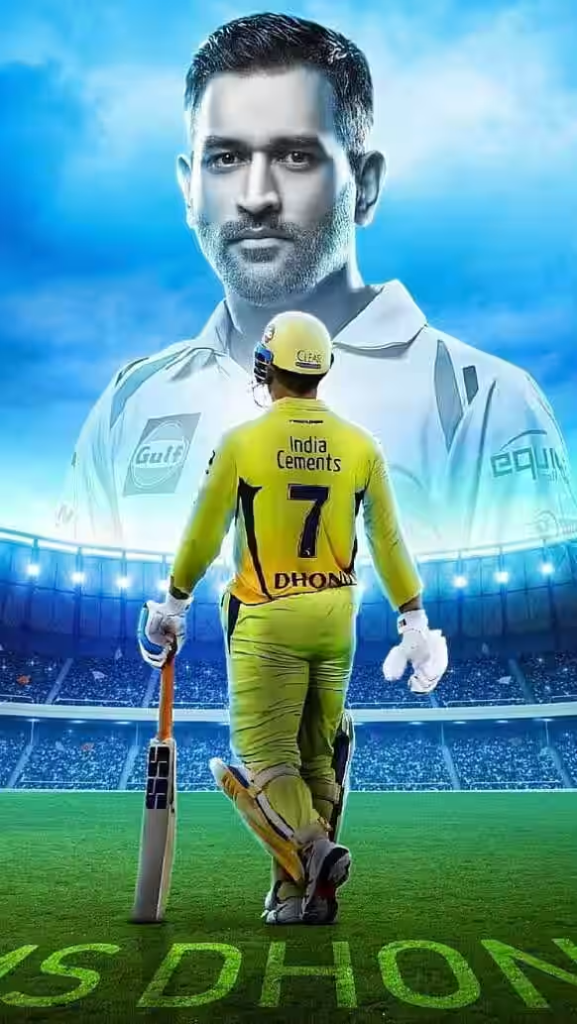
MS Dhoni Awards, Honours, Achievements
National Awards
• Rajiv Gandhi Khel Ratna (2007)
• Padma Shri (2009)
• Padma Bhushan (2018)
Achievements
• MTV Youth Icon of the Year (2006)
• ICC ODI Player of the Year (2008, 2009)
• CNN-IBN Indian of the Year in Sports (2011)
• ICC Award for Spirit of Cricket (2011)

MS Dhoni IPL Auction Price History
| Year | Price | Team |
|---|---|---|
| 2018 | 15 Cr | Chennai |
| 2019 | 15 Cr | Chennai |
| 2020 | 15 Cr | Chennai |
| 2021 | 15 Cr | Chennai |
| 2022 | 12 Cr | Chennai |
| 2023 | 12 Cr | Chennai |
| 2024 | 12 Cr | Chennai |
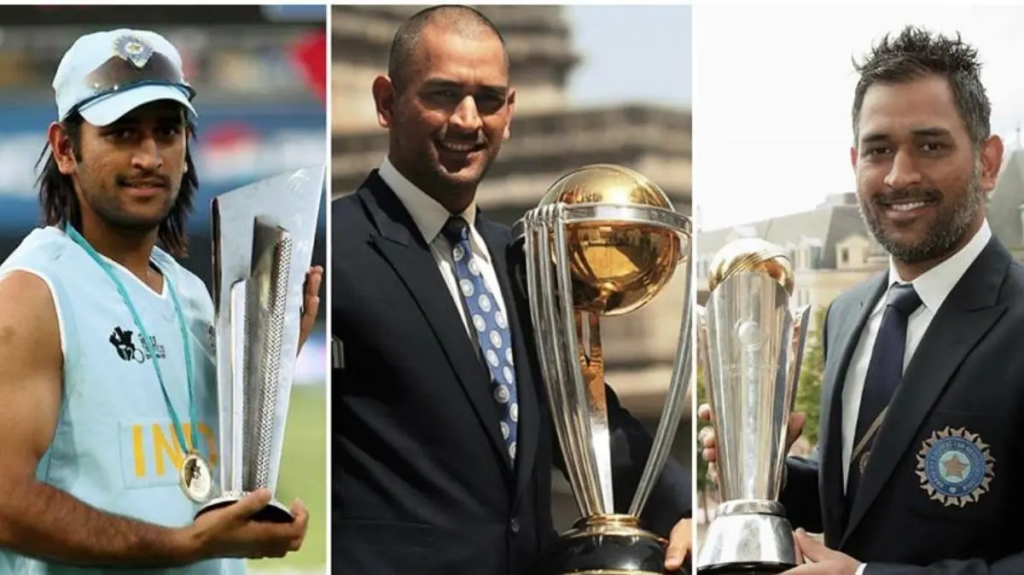
MS Dhoni’s Social Media Accounts
| M S Dhoni (@mahi7781) | |
| MSDhoni | |
| MS Dhoni | |
| Wikipedia | MS Dhoni |
Some Lesser-Known Facts About MS Dhoni
- Does MS Dhoni smoke?: No
- Does MS Dhoni drink alcohol?: Yes, occasionally
- His family belongs to Lawli, a village in Almora district in Uttarakhand. In the 1970s, his father, Pan Singh, left the village to work in a steel factory in Ranchi.
- MS Dhoni’s surname is ‘Dhauni’ and not Dhoni. According to his uncle Ghanpath Singh Dhauni, his surname was wrongly entered in the school certificates, which could not be rectified even after multiple requests.
- He secured 65% in his 10th Board exams.
- In 1993, he was first spotted as a goalkeeper by KR Banerjee, the cricket coach at his school, who later asked him to try his hand in wicket-keeping.
- It was PC Poddar, the former cricket captain of Bengal, who saw great potential in him during the Talent Resource Development Wing (TRDW) match in Jamshedpur. After which, he was selected in the Bihar U19 team in the 1998/99 season, where he scored 176 runs in 5 matches.
- In 2002, when Dhoni was trying for a place in the India team, he fell in love with a girl named Priyanka Jha. But, unfortunately, Priyanka died in an accident, the same year.
- Though he played as a senior for Bihar from 1999 to 2003, his consistent performance was ignored by East Zone selectors, after which he was moved to West Bengal, where he started working as a ticket collector at Kharagpur railway station for 3 years (2001-2003).
- In 2003, Sourav Ganguly approached him to move to Kolkata, but he denied the offer and went back to Bihar, where he went to the National Cricket Academy.
- His life took a turn in 2004 when he got selected for India A tour of Zimbabwe and Kenya, where he performed exceptionally well.
- On his ODI debut against Bangladesh on 23 December 2004, he was out for a duck.
- Dhoni made his 1st ODI century against arch-rival Pakistan in Vishakapatnam, where he smashed 148 runs from 123 balls.
- Earlier, he used to have long hairs for two reasons, first he is a huge fan of John Abraham, secondly, he used to consider it lucky.
- In 2006, he was voted as the MTV Youth Icon.
- Even after achieving such a huge success in his early career, he remained grounded and spends time with his childhood buddies.
- It was Sachin Tendulkar who recommended his name for India’s skipper in 2007, after which Indian cricket team reached the heights like never before.
- He and his wife Sakshi knew each other since their childhood, but their love ignited in winters of 2007 when they met in Kolkata through Yudhajit Dutta (Dhoni’s manager and friend). It was Dhoni who asked for her number from his manager, and when he later messaged her, she didn’t believe it initially. They dated each other for 3 years and got married in a low-profile ceremony in 2010.
- In 2011, he was honoured with the rank of Lt. Colonel by the Indian Territorial Army.

- He was the highest taxpayer sportsperson in India for the year 2012, 2013, 2014.
- Dhoni is a good friend of actor, John Abraham.
- He is counted among the best finishers in modern cricket, and known for finishing the ODI matches by hitting a six, popular among them was the winning six in the 2011 ICC World Cup final against Sri Lanka.
- Dhoni learned his signature shot, ‘The Helicopter Shot’ from his childhood friend Santosh Lal, who passed away in July 2013.
- In 2012, he became one of the world’s top-earning sportsperson (#31 in the world) by Forbes magazine, beating popular sportspersons such as Manchester United’s Wayne Rooney and the World’s fastest man Usain Bolt.
- He announced his Test retirement after the Melbourne test match in December 2014 during the Australia tour, where he was just 1 test match defeat away for equaling the record of being captain of most defeated test matches abroad.
- There is a hotel in Ranchi named after him – ‘Mahi Residency.’ The hotel was named after he made it to the squad of the Indian national cricket team in 2004.
- On 2 February 2022, the poster of a graphic novel, Atharva – The Origin, was released by Virzu Studios in association with MIDAS Deals Pvt Ltd. In this graphic novel, Dhoni has appeared as a superhero and warrior leader.

